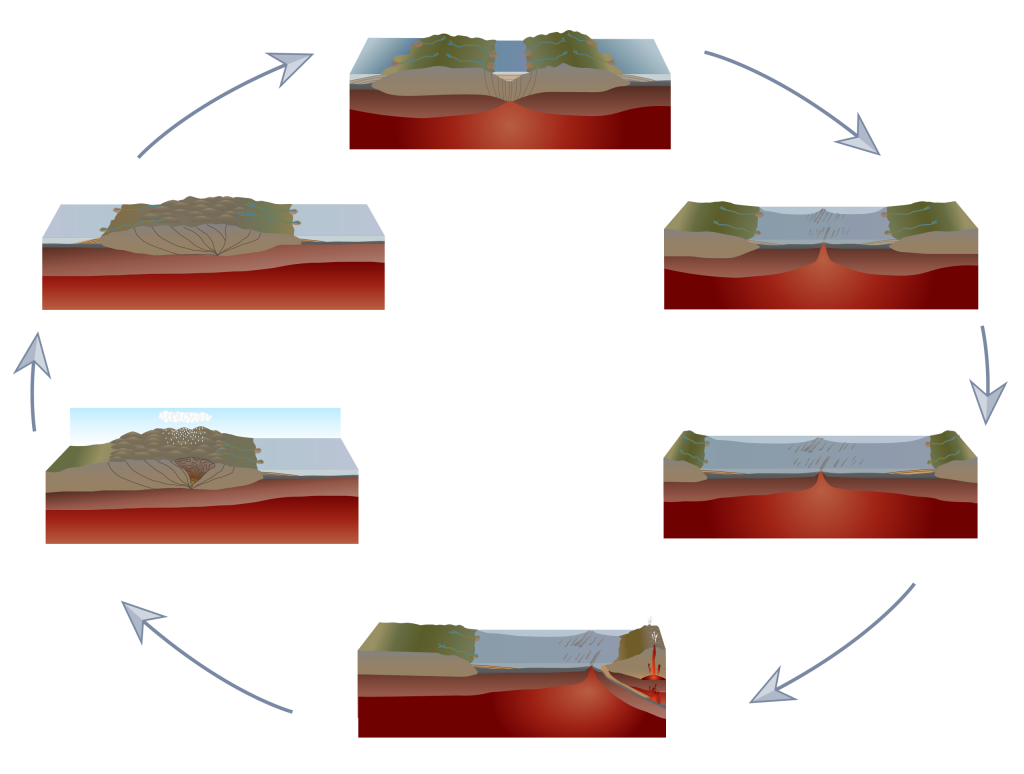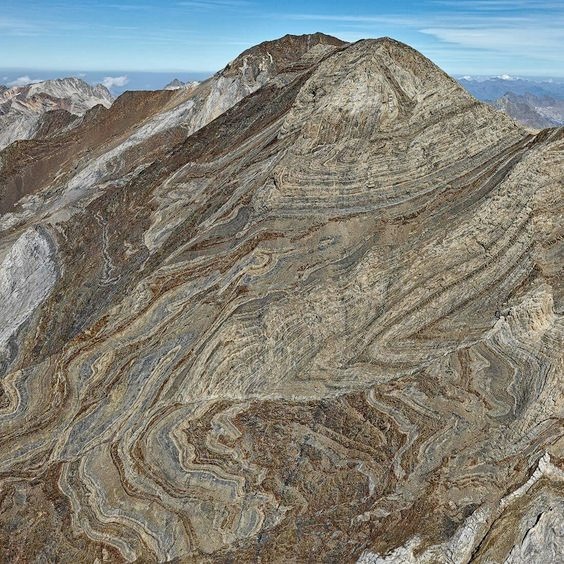Wilson? Is there a guy named Wilson in the Tour de France? Not this year far as we know but Wilson does play an important role in the area we are racing today.
During this Tour de France and Tour de France Femmes you will learn a lot about how continental collisions resulted in the mountains the riders climb. Today we offer you a deep dive into everything plate tectonics, continental cycle and the Pyrenean Ocean. Yes, you read that correctly: the Pyrenean ocean. Buckle up, you are about to learn a lot.
Let’s cycle with Wilson
The route will take the riders from Tarbes which lies in the flat lands north of the Pyrenees known as the Aquitaine Basin. We finish in the heart of the high Pyrenees. On the way we find the Col d’Aspin (1489m), the Col du Tourmalet (2115m) and the final climb to the finish line at Cauterets-Cambasque. The peloton crosses a former plate boundary today.
This plate boundary between the Eurasian and Iberian tectonic plate has a long-lived history. It first was a rift which is a deep, oceanic basin that opened because Iberia moved southwards. Yes, they didn’t want to be part of Europe in early Cretaceous times, around 110-90 million years ago, and moved away like we learned on stage one.

About 90 million years ago, Iberia changed its mind and moved back north again towards Europe. This closed the basin leading to a continental collision in the late Cretaceous and early Cenozoic (80-20 million years ago). In the last 20 million years, Iberia and Europe did not move with respect to each other and became the same plate.
This dance of plates, the breaking, opening up an ocean and coming back together in a continental collision along the same plate boundary is called the ‘Wilson Cycle’. It’s not a special brand of bicycle. The Wilson’s Cycle is a concept of cyclical plate tectonics named after the pioneering Canadian geophysicist and geologist John Tuzo Wilson. He first proposed this fundamental concept in plate tectonics.
A hard break-up
When Spain and Portugal moved away from Europe, the separation of the two tectonic plates first stretched the continents. The originally ~30 km thick continental crust got reduced to a very thin one (<10 km). When stretching continued, all continental crust was gone and rocks of the mantle below came up to the sea floor. Sometimes these mantle rocks melted. It resulted in the forming of volcanic (basaltic) oceanic crust.
In other parts the stretching was so slow that melting did not occur and the mantle rocks themselves formed the sea floor. This is still the case for today’s Bay of Biscay. An ocean floor like this one also existed in the rift where we now find the Pyrenees. Yes, these mountains were once an ocean in the Cretaceous. On top of this ocean floor, thick piles of sandstones and claystones formed (also visible at stage 3). We can see these now in the northern Pyrenees, south of Tarbes.

This Pyrenean ocean only had a short lifetime. Most of it subducted when Spain and Portugal moved back north. After all of the ocean crust was pushed below Europe, the Iberian and Eurasian plates collided and the Pyrenees started forming.
Cocktails at the beach
Instead of having a lovely ride along the coast of the Pyrenean Ocean, the riders have to climb serious mountains. Thanks a lot, plate tectonics. But though we can’t swim, we still see the remnants of the ocean.
Immediately south of Sarrancolin the riders cross the remains of the Pyrenean Ocean. It is now a narrow fault zone. Geologists call such a fault that represents a former ocean a ‘suture zone’. It represents the former boundary between the Eurasian and Iberian plates. Along its length this suture zone exposes slivers of mantle rocks that once formed the Cretaceous ocean floor (see stage 5). But enough cocktails by the seaside. We leave Eurasia and enter a different geological world as we ride into the heart of the high Pyrenees.

Sit back, it’s becoming more complicated
The High Pyrenees consist of large, kilometers-thick and tens of kilometers long and wide slices of the northern margin of the Iberian continent. When Iberia was pushed below France, the top part of the Iberian continent was scraped off and the slices were progressively pushed southward over each other. This created an immense pile of ‘imbricated’ continental crustal slices. These piled-up slivers of Iberian crust are mainly composed of rocks that were deformed million of years earlier, during the Variscan orogeny, and that were recrystallized (‘metamorphosed’) in the process.

The metamorphic rocks of the high Pyrenees are mostly Ordovician to Devonian (485-360 million year old) sedimentary rocks. They were deformed and baked during the Variscan mountain building event. This event dominates much of the crystalline massifs of Central and Western Europe. It was also responsible for the formation of the last global supercontinent, Pangea.
During the Variscan Orogeny the crust became so thick and hot that it melted. It resulted in large magma chambers that cooled to form granite ‘intrusions’ that are now exposed in the high or axial zone of the Pyrenees, such as the Néouville and Eastern Cauterets granite massifs. These granite massifs dominate the spectacular landscape of the high Pyrenees and form the high peaks towering over the second part of today’s stage.
Hello, amazing helicopter footage.
Riding through time
We have so much more geological time periods and rocks on today’s stage but the peloton just won’t slow down to check it all out. Okay, some more science then for those in the grupetto.
After descending from the Col d’Aspin into the valleys of Campan and Gripp the riders start the grueling climb up the northeastern ramp of the Col du Tourmalet. They ride through the deformed Ordovician-Devonian layers. We cross the major ‘Eaux-Chaudes thrust fault’ that transported these rocks southward over younger Carboniferous slates (baked claystones). In these slates is the large Néouville granite body forming the magnificent scenery of the high peaks.
From Luz-Saint-Sauveur the route turns north again to Pierrefitte-Nestalas and back south to Cauterets. We cross the Eaux-Chaudes fault again with its thick packages of folded and metamorphosed Ordovician to Devonian sedimentary rocks.

In short.
We race through the Pyrenees which are the perfect example of the Wilson’s Cycle. We had a former ocean that opened and closed. There was a continental collision that formed the Pyrenees. But in those Pyrenees we find rocks that even come from an earlier mountain building event, an earlier Wilson’s Cycle so to say all the way back to the formation of Pangea.
The Wilson’s Cycle is an important hypothesis in geology but I won’t bet on his cycle. He is rather slow we heard, so we’d bet on somebody else than Wilson to win today’s stage.





